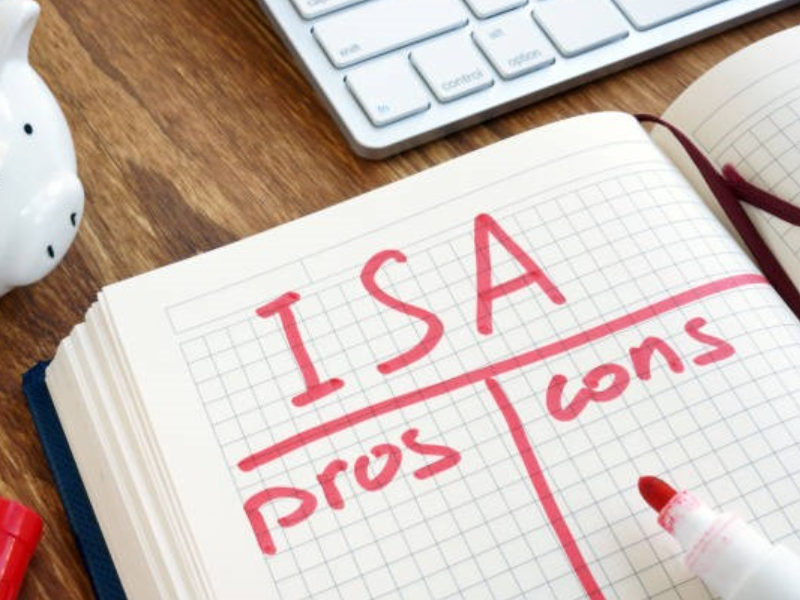Financial, Latest News
Nathan Waldron
22
Apr 2023
Have you ever been in a difficult financial situation financially and wished for a fairy godmother to come to your aid? Well, say hello to overdrafts. They can be lifesavers, but they also come with their own set of rules and potential pitfalls. So let's have a chat about what overdrafts are, the types you'll come across, the good and bad sides that you should be aware of.
Let's dive in.
An overdraft is your bank's fairy godmother, granting you access to additional funds when your account balance falls below zero. It is essentially a short-term credit facility offered by your bank or building society that allows you to borrow money up to a certain limit. The overdraft limit is determined by factors such as your credit score, financial history and company policies.
The Two Types of Overdrafts:
Authorised Overdrafts:
These are pre-arranged overdrafts with your bank or building society, typically for a set amount. They have an interest rate and sometimes other fees, but they are usually less expensive than unauthorised overdraft charges. Consider them the well-mannered sibling in the overdraft family.
Unauthorised Overdrafts:
These occur when you spend more than your available balance without first arranging for an overdraft. Banks may still approve the transaction but beware of the consequences. Unauthorised overdrafts frequently have high interest rates and fees, making them the mischievous sibling who can get you into trouble.
The Good Side of Overdrafts:
Financial Safety Net:
Overdrafts can provide a temporary cash boost in emergencies, helping you avoid declined transactions and the embarrassment that may come with it.
Flexibility:
They offer a flexible way to manage your finances, allowing you to borrow only what you need and repay when you can.
The Dark Side of Overdrafts
High Costs:
Overdrafts can be expensive, especially unauthorised ones, with interest rates and fees adding up quickly.
Debt Trap:
Relying too much on overdrafts can lead to a vicious cycle of debt, as you continuously borrow to cover previous overdrafts.
The Rules of Overdrafts
Interest Rates and Fees:
Banks and building societies in the UK must clearly display their overdraft interest rates and fees, allowing consumers to make informed decisions.
Buffer Zones:
Many banks offer a small "buffer zone" where customers can go overdrawn without incurring charges, providing a safety net for minor oversights.
Overdraft Alerts:
To help customers avoid unauthorised overdrafts, banks and building societies are required to offer optional text or email alerts when their account balance is close to zero.
Overdraft Comparison Tools:
UK banks must provide online tools to help customers compare overdraft costs, making it easier to find the best deal.
Tips to get out of an overdraft
Assess your situation:
Take a good, hard look at your finances. Figure out exactly how much you owe and make a plan to pay it off. Knowledge is power.
Create a budget:
Track your income and expenses, then set spending limits for each category. Stick to your budget, and you'll start chipping away at that overdraft.
Cut unnecessary expenses:
Review your budget and identify areas where you can cut back. Goodbye, daily lattes. Hello, home-brewed coffee.
Increase your income:
Look for ways to boost your earnings, like taking on a side gig, selling items you no longer need, or even asking for a raise at work. Every little bit helps.
Prioritise paying off your overdraft:
Make it your mission to tackle the overdraft first, as it can accumulate fees and interest. Set a target date for clearing it and celebrate your progress along the way.
Contact your bank:
Talk to your bank about your overdraft situation. They may be able to offer solutions like a temporary interest rate reduction or a more suitable account to help you get back on track.
Build an emergency fund:
Once you've cleared your overdraft, start building an emergency fund to cover unexpected expenses. This will help prevent you from falling back into overdraft territory in the future.
Stay disciplined and focused:
Remember, getting out of an overdraft takes time and effort. Stay committed to your plan and you'll eventually break free.
Conclusion
Overdrafts can be a useful financial tool when used responsibly, but it's crucial to understand the costs and potential pitfalls. By knowing the different types of overdrafts, their benefits and drawbacks and the rules surrounding them, you'll be well-equipped to make informed decisions and keep your finances on track. So the next time you're tempted by that must-have pair of shoes, remember to consider your options and weigh the pros and cons of using an overdraft.
Remember, an overdraft should be used as a last resort or for short-term financial needs, not as a regular means of borrowing. If you find yourself consistently relying on overdrafts, it may be time to re-evaluate your budgeting and spending habits. Consider seeking financial advice or looking into alternative borrowing options.
In conclusion, overdrafts can be both a blessing and a curse, depending on how they are used. As long as you stay informed and make smart choices, you'll be able to use overdrafts to your advantage, without falling into the debt trap.
- The content on this page is regularly checked by our onboarded advisers and experts.
Be notified when we add new articles
-

Newcastle-under-Lyme, Staffordshire
We provide financial advice to our clients on behalf of The Advice Partnership from M&G Wealth Advice.
Minimum Wealth

No minimum

Financial

Later life

Mortgages

Our Team: 1 Member

 Newcastle-under-Lyme, Staffordshire
Newcastle-under-Lyme, Staffordshire
 No minimum
No minimum  Free Consultations
Free Consultations




